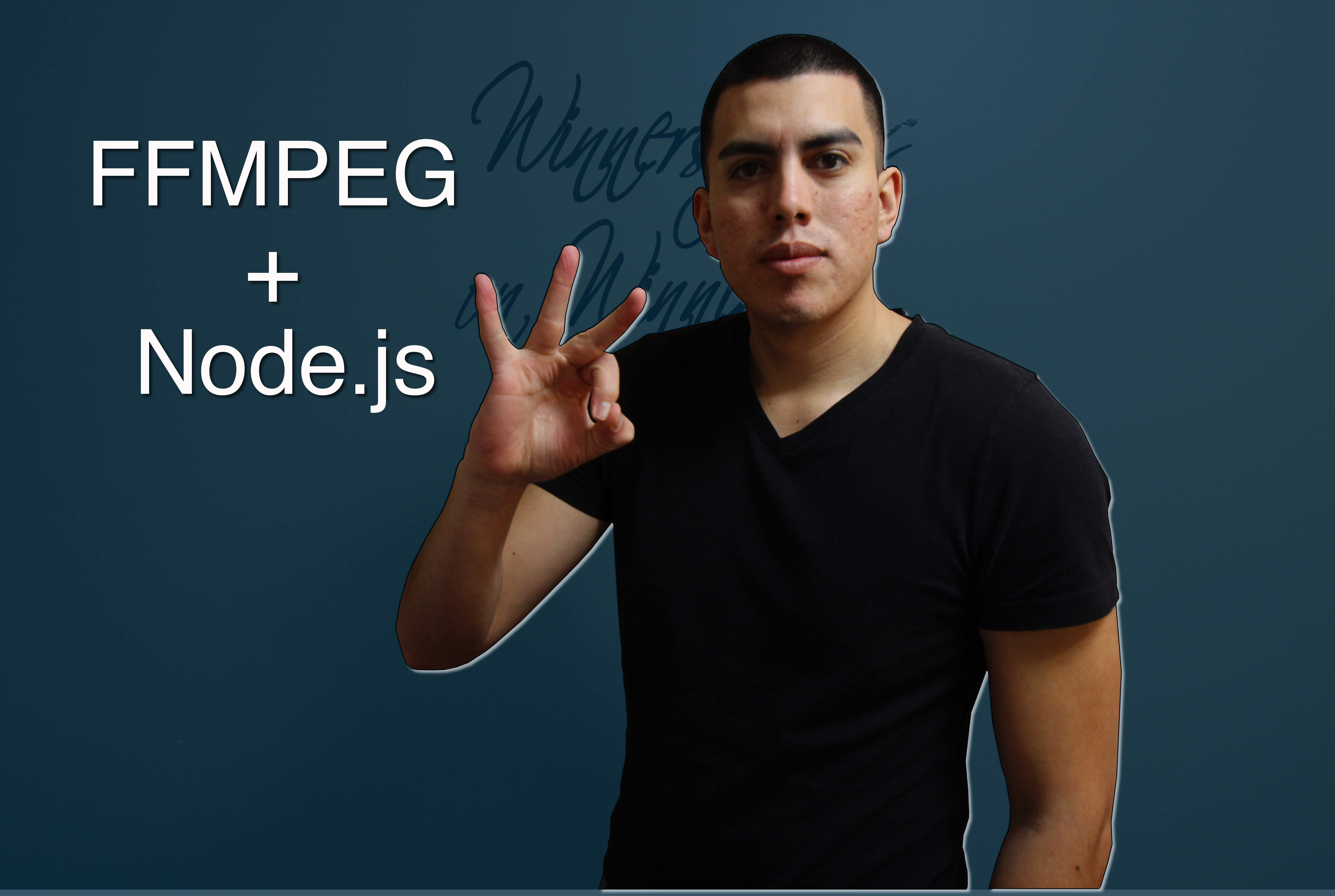

#Ffmpeg nodejs mp4
Now, the code to convert GIF to MP4 ffmpeg. Also check out node-ffmpeg-installer Installation. To prevent an ffmpeg-static upgrade downloading backwards-incompatible ffmpeg versions, use a strict version range for it or use a lockfile. Use npm init to create a new Node.js project. For example, ffmpeg-static4.5.0 might download ffmpeg 5.0. Navigate to the new directory: cd video-rendering. Not having this config will break your program Lets start by opening up our terminal and creating our projects directory: mkdir video-rendering. #Codeįirst, let's set up FFMPEG paths in our index.js file: const ffmpegInstaller = require ( " " ) const ffprobe = require ( " " ) const ffmpeg = require ( " fluent-ffmpeg " )(). npm i - D ffmpeg - installer / ffmpeg fluent - ffmpeg ffprobe - installer / ffprobe If the OS is linux based, it'll download specific binary for that.Īnd there's also an amazing package called fluent-ffmpeg which provides a very declarative, callback-based API to interact with FFMPEG. If you are running Windows, it'll download the ffmpeg.exe file. You'd have to keep a Ubuntu compatible FFMPEG binary alongside your own OS based binary, and still it won't work properly.īut thank the NPM Gods, we have the package that installs the right binary based on the operating system. But you can't directly upload the binary to Cloud environments like Google Cloud Functions/AWS lambda without a lot of preprocessing and testing on your end. If it's your own server, you can upload it there manually and it'll work.

What I mean by this is that in a real world application, you'll be deploying the code on cloud/servers, and you'd need FFMPEG there too. Did you know how easy it is to render videos in Node.JS Every video consists of multiple frames combined in a sequence.

And we'll need to download the right binary.
#Ffmpeg nodejs install
If you are using a proper Node.js image like node:16, then the commands to install FFmpeg will be like the following: RUN apt update RUN apt install ffmpeg.
#Ffmpeg nodejs how to
We'll require a binary of ffmpeg and will have to figure how to use it. Note: We are using apk add because at the top, we chose the node:16-alpineversion of node (which is smaller in size). It throws the same error for each built in FFmpeg function (.toFormat. TypeError: Cannot call method 'withSize' of undefinedĪt Object. It seems straightforward enough and I can do it through the FFmpeg command line, but I am trying to get it working within a node.js app, here is the error it is returning: C:\Users\Jay\workspace\FFMPEGtest\test.js:17 saveToFile('C:/Users/Jay/Documents/movie/drop.flv')

setFfmpegPath("C:\Users\Jay\Documents\FFMPEG")Ĭonsole.log('file has been converted successfully') Ĭonsole.log('an error happened: ' + err.message) Set the path to where FFmpeg is installed make sure you set the correct path to your video file flv file using FFmpeg, here is what I have so far: var ffmpeg = require('fluent-ffmpeg') avi file in which I would like to transcode into a. Have a bit of a problem with this, I have an.


 0 kommentar(er)
0 kommentar(er)
